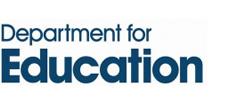- View more resources from this publisher
 Department for Education
Department for Education
Professional Development Materials
Standards Unit: Improving Learning in Mathematics professional development materials. Features notes and presentations describing the active learning approaches.
Getting started To encourage participants to: * reflect on their current assumptions, beliefs, and teaching practices; * consider the aims of the approaches in this resource; * begin exploring ways in which learners might become more actively engaged in their own learning.
Learning from mistakes and misconceptions To encourage participants to: * reflect on the nature and causes of learners’ mistakes and misconceptions; * consider ways in which we might use these mistakes and misconceptions constructively to promote learning.
Looking at learning activities To encourage participants to: *explore the five different types of mathematical activity contained in the resource. *Classifying mathematical objects: reflecting on the properties of mathematical objects; sameness and difference; definitions. * Interpreting multiple representations: interpreting concepts from a variety of perspectives; making links. *Evaluating mathematical statements: testing generalisations, generating examples and counter examples. *Creating problems: creative thinking, ‘doing and undoing’ mathematical processes. *Analysing reasoning and solutions: comparing different methods for doing problems, organising solutions and/ or diagnosing the causes of errors in solutions.
Managing discussion To encourage participants to: * experience discussion of mathematics; * reflect on how discussion can be used to promote learning; explore the characteristics of purposeful discussion; * explore the management skills that are needed to implement purposeful discussion.
Developing questioning To encourage participants to reflect on: * the reasons for questioning; * some ways of making questioning more effective; * the different types of ‘thinking questions’ that may be asked in mathematics.
Using formative assessment To encourage participants to reflect on: * the reasons for assessment; * the differences between formative and summative assessment; * some difficulties commonly experienced with formative assessment; * alternative methods for formative assessment; * the type and quality of feedback given to learners; * the implications that assessment has for teaching.
Show health and safety information
Please be aware that resources have been published on the website in the form that they were originally supplied. This means that procedures reflect general practice and standards applicable at the time resources were produced and cannot be assumed to be acceptable today. Website users are fully responsible for ensuring that any activity, including practical work, which they carry out is in accordance with current regulations related to health and safety and that an appropriate risk assessment has been carried out.
Downloads
-
Getting started notes 99.07 KB
-
Getting started presentation 361 KB
-
Poster images 2.42 MB
-
Looking at learning activities notes 464.54 KB
-
Managing discussion notes 595.37 KB
-
Managing discussion presentation 1.61 MB
-
Developing questioning notes 150.39 KB
-
Developing questioning presentation 429.5 KB
-
Using formative assessment notes 104.99 KB




